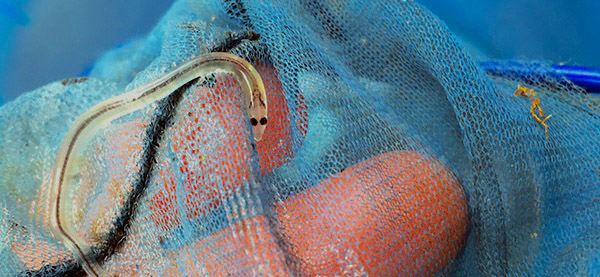The Hudson River Eel Project
The Hudson River Eel Project is a citizen science project coordinated by the DEC Hudson River Estuary Program and the Hudson River National Estuarine Research Reserve, in partnership with NEIWPCC and the Water Resources Institute at Cornell University. On the Saw Kill, the volunteers are coordinated, and the data is collected, by Hudsonia at the Bard Ecology Field Station.
The eel project on the Saw Kill is a joint student/community undertaking every spring and summer. In the spring, large fyke nets are set at the mouth of the Saw Kill upstream of where it empties into Tivoli Bays. The nets stay in place for six to eight weeks, catching the juvenile eels as they migrate upstream. Each net is checked every single day at low tide by two or more volunteers. Eel mops — devices made to mimic juvenile eel habitat — are also set up and are checked as frequently as needed.
On their journey upstream, eels are confronted by barriers that prevent access to favorable habitats. Eel ladders that catch eels attempting to swim upstream are set up on the Saw Kill from May to October. The eels are counted, sized, and released above the dam. The ladders are checked twice a week.
Community volunteers, including high school students, are always welcome to help with these important projects. Most volunteers sign up to check a net on one or more specific days per week. The sampling takes about an hour each day. All gear and materials are provided, but personal transportation to the site is required. Volunteers should be willing to work outside under variable conditions and work collaboratively within a team of students and volunteers.
Project History
The Hudson River Eel Project began in 2008 with two sites, the Fall Kill in Poughkeepsie and Furnace Brook in Cortlandt. By 2018 the project expanded to 14 sites, ranging from New York City to Troy, with over 750 volunteers lending a hand (and learning a thing or two). Over its lifetime, the Eel Project has caught, counted, and released over one million glass eels, helping these animals access better habitat.

